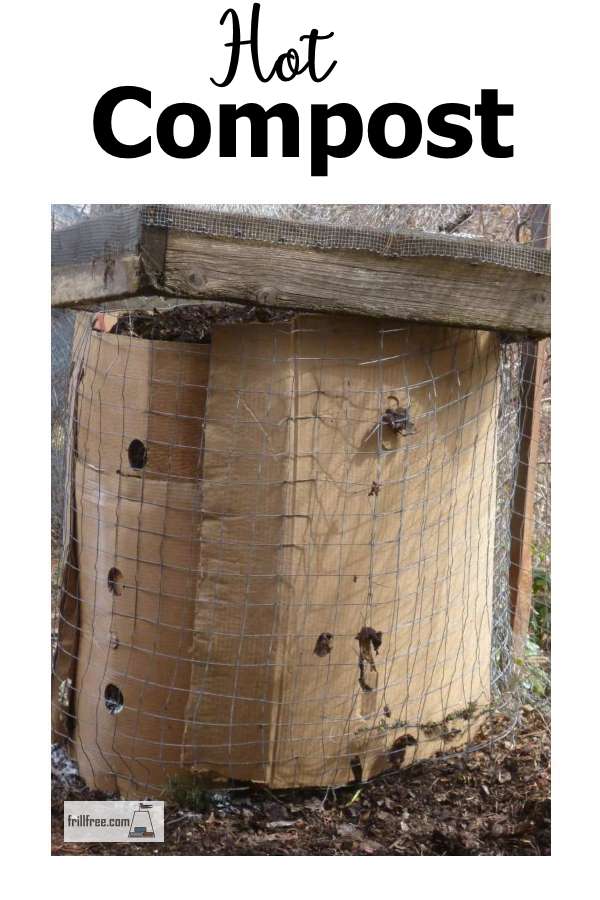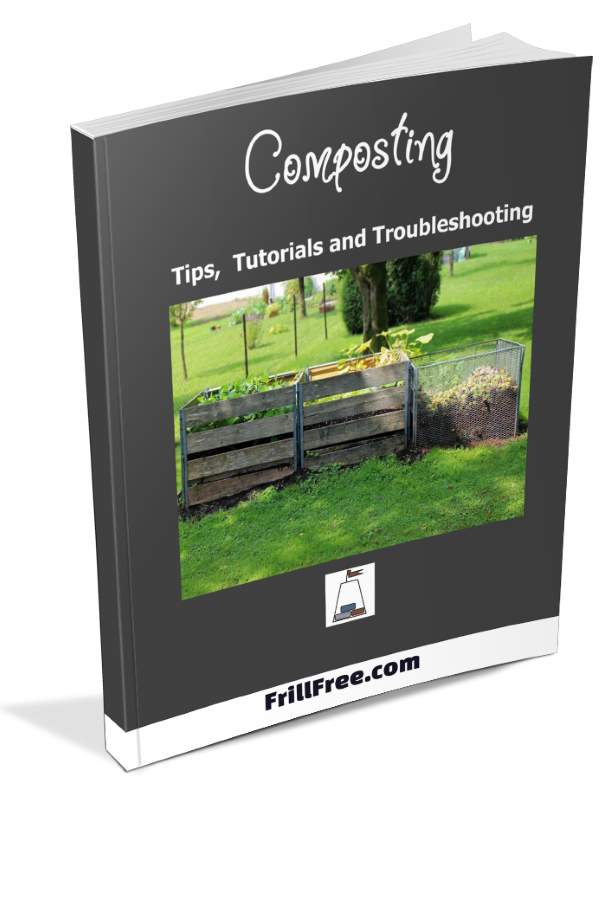- Homesteading
- Composting
- Hot Compost
Hot Compost
Thermophilic Composting kills weed seeds and pathogens
Contrary to popular belief, it's not the heat that you are adding. The heat of a good working compost pile is due to the activity of millions of tiny organisms, the side effect of this heat is that it kills many unwelcome pathogens and most weed seeds.
Quite often, after a winter of adding kitchen scraps to a compost pile, it doesn't seem to be doing anything.
A stagnant pile is one that is in stasis, so it's up to you to add something to it to get those populations of micro-organisms up and running.
How do you do this?
Well, layering the
kitchen scraps with mature compost will add important members of the micro herd, and also
adding a few other ingredients will assist with getting them to start
really burgeoning.
Some of my favorite things to add in small amounts are Glacial Rock Dust, and something that's a lot cheaper and easier to find; spoiled grain or flour.
Any kind of milled grain will do; spoiled and moldy chick scratch or other animal feed, alfalfa pellets or mash, flour that has gone rancid or has had vermin get into it; it's all good. The smaller the pieces, the faster it will work to get a hot compost really going.
I
lined this wire bin with cardboard because the pieces were already
partially rotted down, and small enough to fall through the holes. No point in giving an invitation to every dog in the neighborhood to have a free meal - compost, like any half rotten thing, is not ideal for dogs, even though they are really attracted to it.
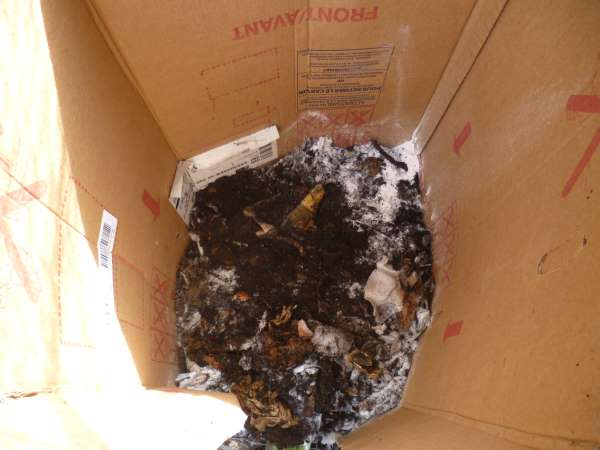 The first layer fills the bottom of the cardboard lined wire bin
The first layer fills the bottom of the cardboard lined wire binThe first step is to take your compost bin apart and start mixing in some of the mature compost that you might on have on hand.
Or, lacking that, a couple of shovelfuls of leaves from under a tree, or soil from your garden bed.
Anything that contains many of the crucial local microorganisms such as algae, bacteria, yeast and fungi, along with some of the larger creatures like earthworms, especially their egg capsules.
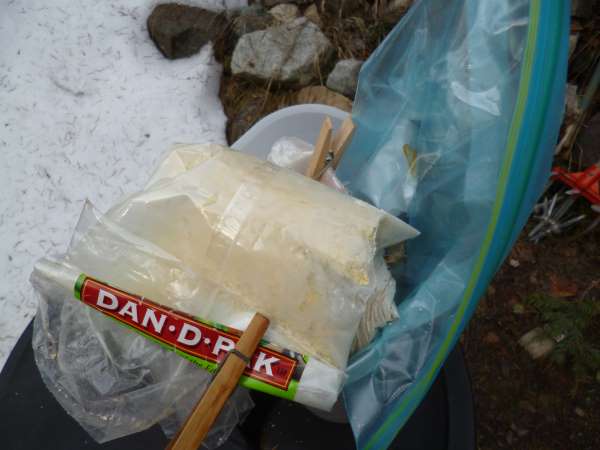 This is the perfect way to use old grain, flour and other staples that are past their 'best by' date...
This is the perfect way to use old grain, flour and other staples that are past their 'best by' date...If you have animals around, like bears, the best time to make one of these kinds of compost piles is before they emerge from hibernation in the spring, particularly if you're getting rid of fruit or vegetables in any kind of quantity.
A screen over the top will keep out smaller animals, such as cats or skunks, but nothing can prevent a bear from tearing it apart.
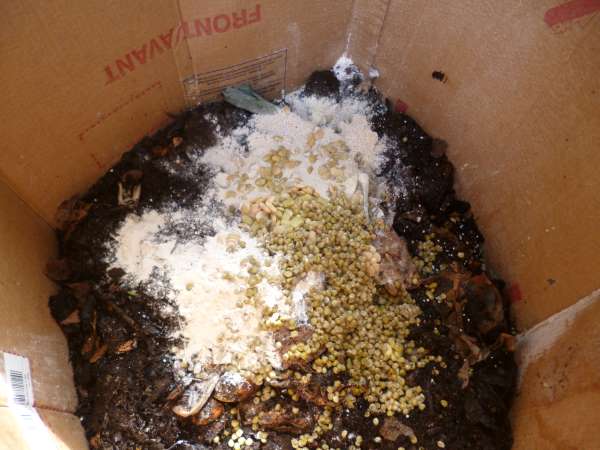 Add any other vegetable matter like freezer burnt packaged vegetables or fruit, or even pickles.
Add any other vegetable matter like freezer burnt packaged vegetables or fruit, or even pickles.Then, we wait; the heating of this kind of pile depends on two things (apart from the raw materials); moisture, and air.
If the air flow is adequate into the pile, and it's moist (the best description is that of a wrung out sponge) then you can expect the temperature to rise within a few days.
If the pile is too dry, sprinkle with some compost tea or Liquid Organic Fertilizer to get it moist enough to start working. These ingredients also contain Nitrogen, which the micro herd needs.
After two weeks, the pile itself will be steaming noticeably on cooler mornings, and then it will start to cool down.
Stirring it up a bit will start trigger more heating, and then after a month, the compost will not resemble any of the ingredients; it will be Black Gold, and ready to use, or leave in bags to mature a bit.
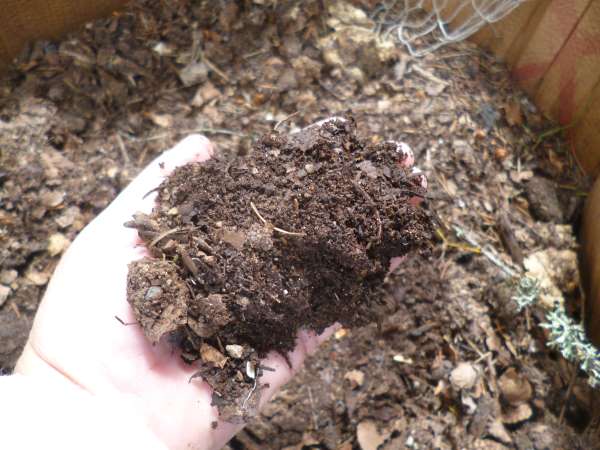 Finished Hot Compost - two months later...
Finished Hot Compost - two months later...Later; this pile will continue to heat for several weeks, and in time it creates the most nutritious and well rotted compost ever.
Some has been used for a mulch, and it makes the best soil for growing lettuce and mesclun. Sift out the large debris of uncomposted pieces, mix with some sand or turkey grit, and seed thinly with your greens for an early spring treat.
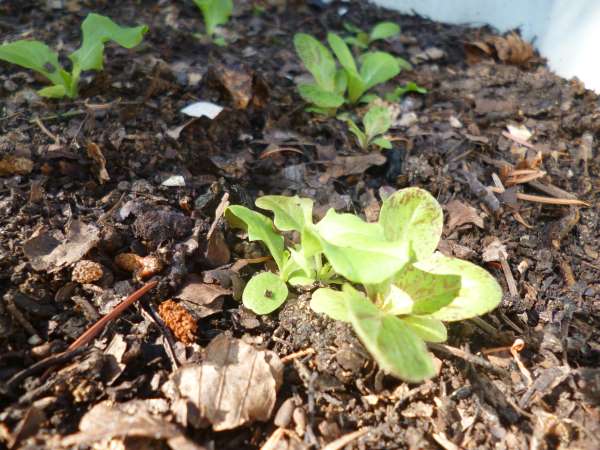 The best mix for starting seeds in the spring - mature compost, screened and mixed with drainage material
The best mix for starting seeds in the spring - mature compost, screened and mixed with drainage material